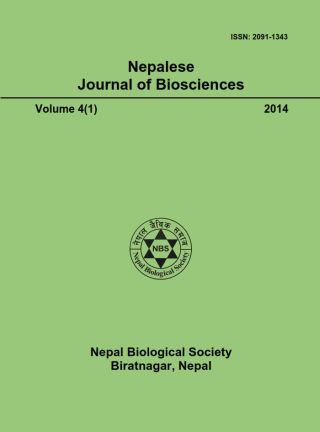General biology and status of Schizothorax richardsonii in Nepal
DOI:
https://doi.org/10.3126/njbs.v4i1.41690Keywords:
Spotted snow trout, hill stream phytophagous fish, AsalaAbstract
Schizothorax richardsonii, commonly called as spotted snow trout, is a coldwater hillstream fish. It is a delicious fish and is important from sportive and commercial point of view. The hillstream modifications comprise presence of irregular folds of skin acting as papillated suckers on the ventral side of the head, closely situated smaller eyes, small gill openings, reduced air bladder and short-stumpy barbells. Body is spotted, slender and sub-cylindrical. It is a phytophagous fish with an adaptation in its mouth to scrap algae from the submerged rocks. Spotted snow trout can spawn naturally as well as artificially by stripping. Sexual dimorphism is vivid during breeding season. It starts spawning after second year. Spawning takes place twice in a year- October/November and March/April. Eggs are of sticky nature. Relative and absolute fecundities have been found about 12,000 and 30,000 eggs/kg respectively. Optimum temperature for incubation is 15-20°C and it takes about 11-18 days for hatching. S. richardsonii has low to moderate vulnerability in Nepal. The population of the fish is decreasing rapidly due to heavy fishing pressure, natural calamity and human disturbances.




